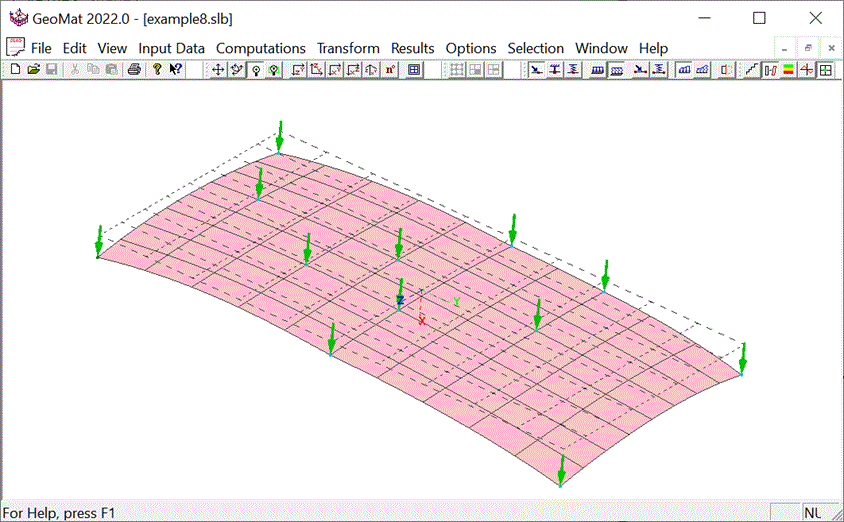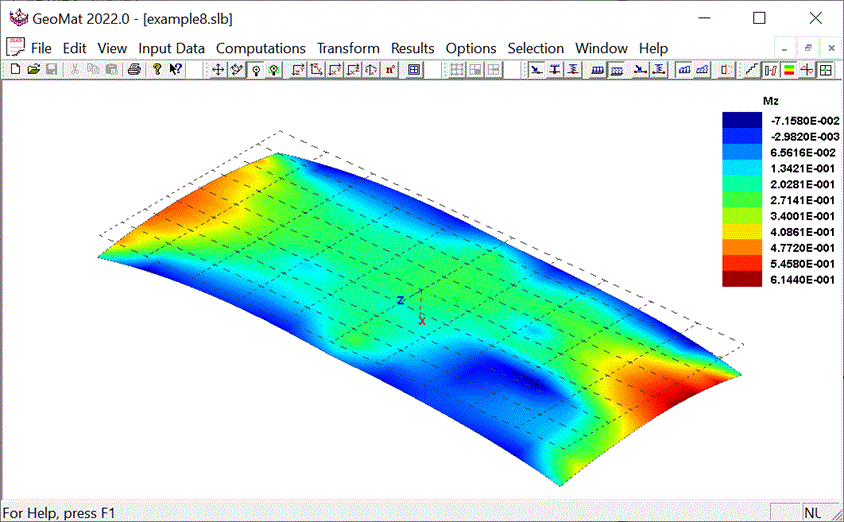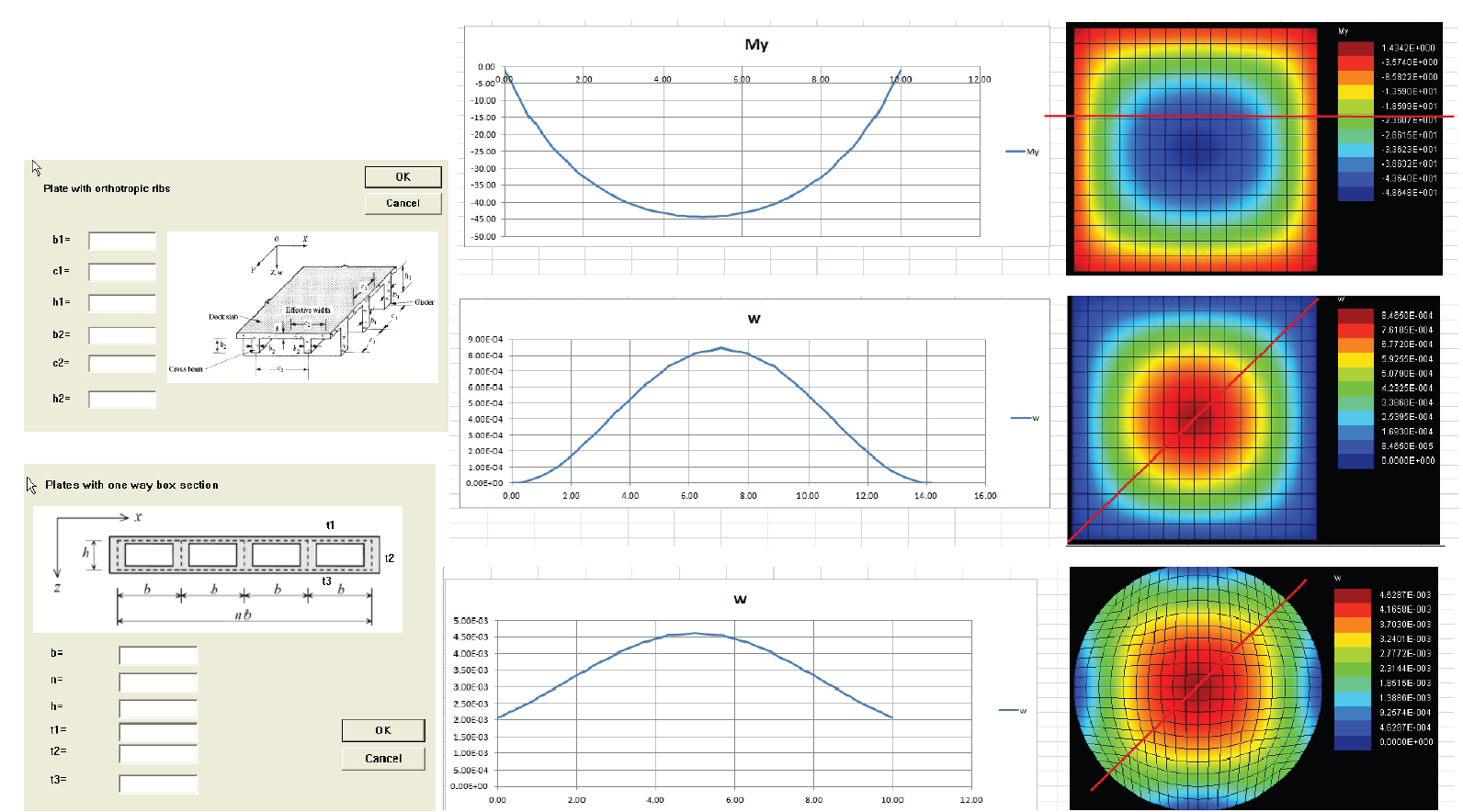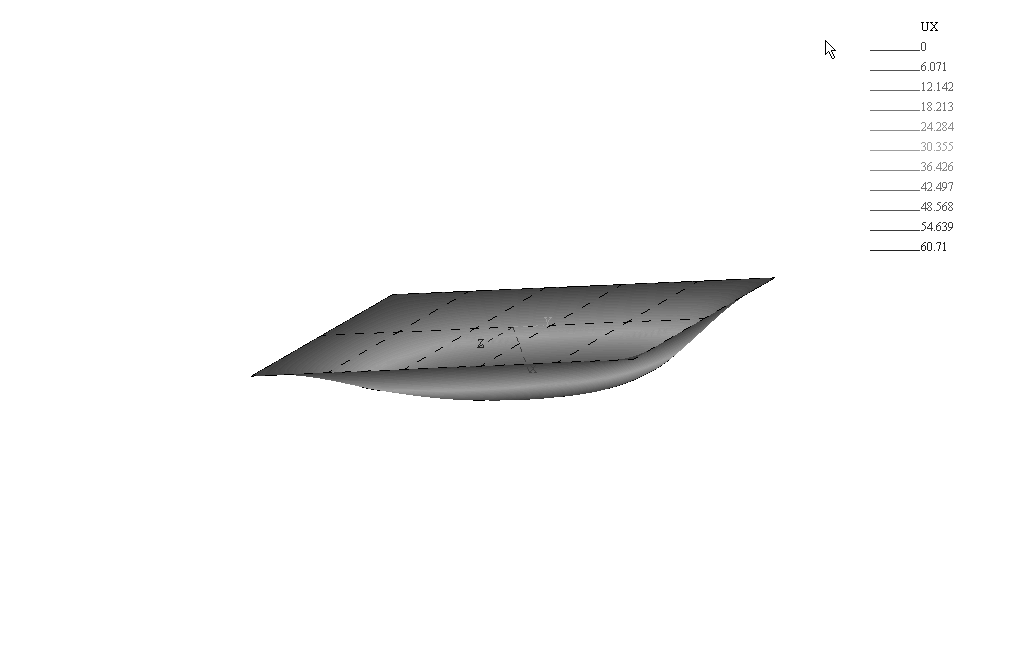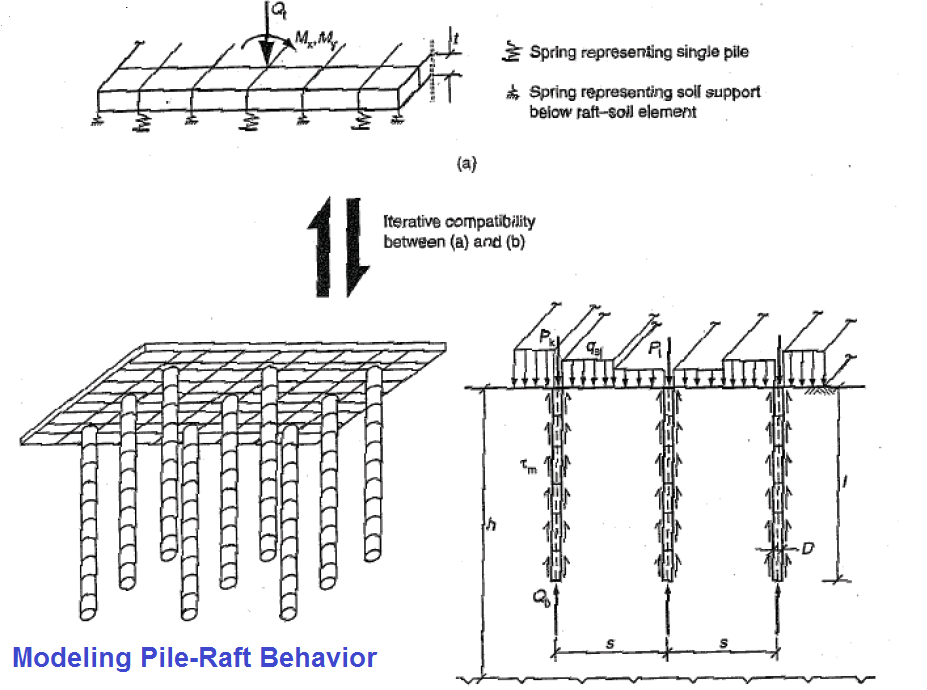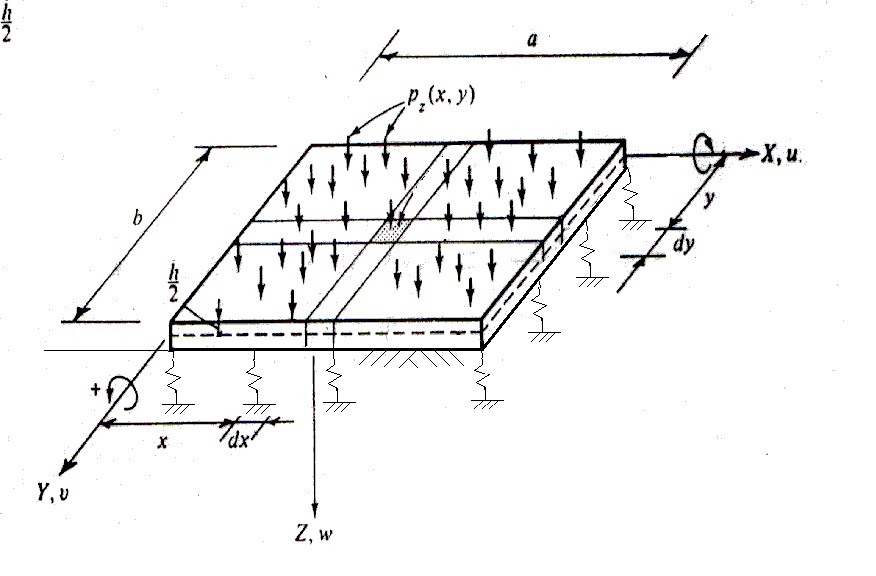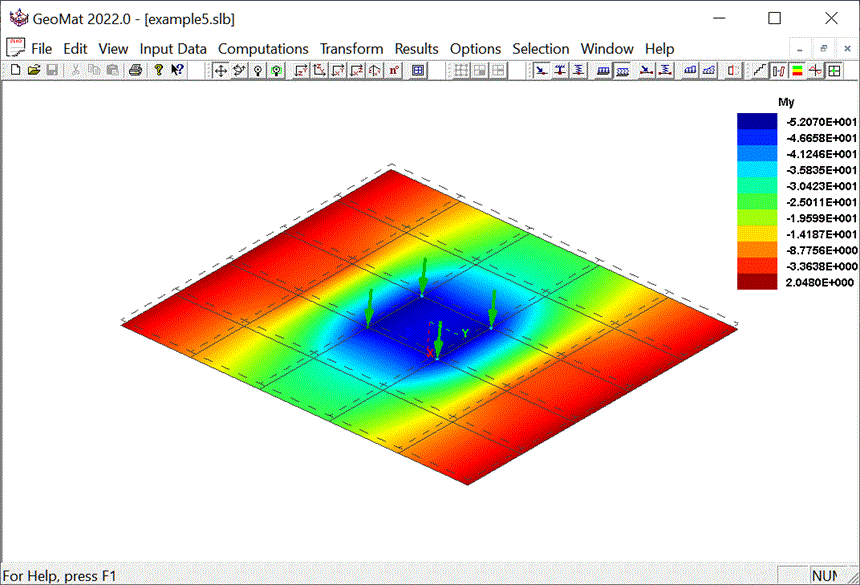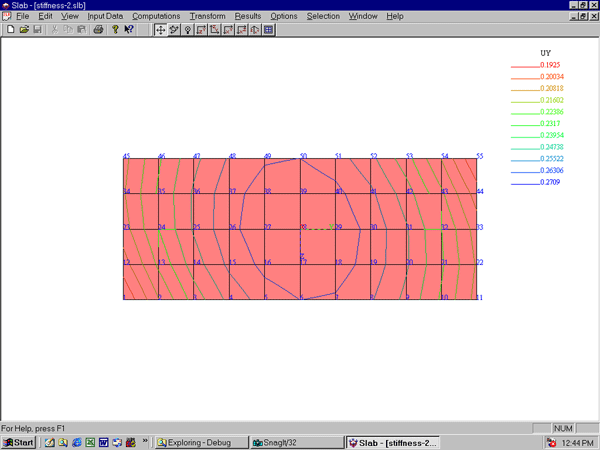Methodology
The engineer must make several initial steps in performing the
analysis and design of a soil-supported mat or a structural
slab:
- Estimate the allowable bearing capacity of the mat or
the resistance provided by the structural members supporting
the slab
-
Estimate settlement and differential movement of the mat
or slab; and
-
Estimate the moments and shears for the structural design
of the mat or slab.
Assuming that a geotechnical engineer has provided
information on the soil, leading to an estimate of the
bearing capacity of the mat, the experience of the
structural engineer will allow for the sizing of the mat or
slab for the initial analyses.
With regard to the soil-supported mat, the initial data
provided by the geotechnical engineer may show a range of
values because settlement and differential movement are
difficult to estimate since the settlement is dependent on
the stiffness of the soil and on the rigidity of the mat.
Loadings on a mat or a slab can vary widely in nature and
magnitude. The finite-element method has been the best tool
to take into account the variety of loadings as well as the
properties of the material in a structure. With modern
methods of characterizing material in the mat or slab and
with the capability of current processors, the solutions to
finite-element arrays proceed rapidly and with a degree of
accuracy in the control of the user.
For a given set of loadings, deformations and movements
within the mat and slab can be computed along with bending
moment and shear stress at any point with the
material. These results provide the engineer with
information on which to base the design of the system. The
method can be applied to a mat or slab that is circular,
rectangular, or an irregular shape, leading to a powerful
analytical tool.
For the mat on foundation, information is available in
technical literature on subgrade modulus. Plainly, the
reaction of soil against the base of a foundation is
dependent on the deflection of the foundation; therefore,
the value of the subgrade modulus is not constant. For many
problems of a mat on foundation, however, a constant value
of subgrade modulus will lead to acceptable solutions
because deflections in most cases are relatively small. The
ability to compute the settlement of the mat at all points
will allow the engineer to use judgment about the value of
modulus being used and adjustment in the value can be made
where indicated. The ability to study the influence of the
various parameters that enter the problem give the engineer
the chance to study an important soil-structure-interaction
problem in detail.
